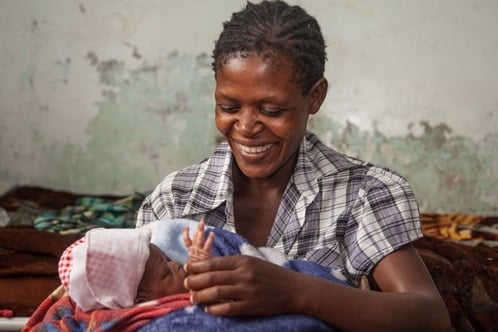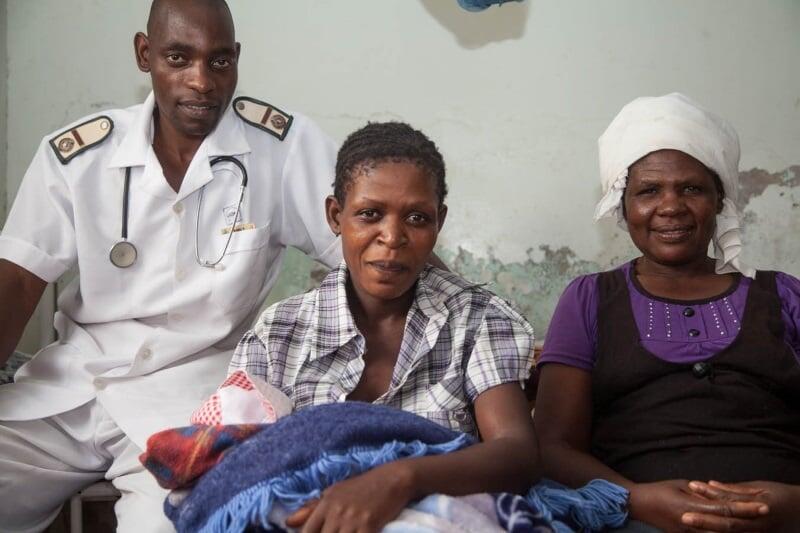HURUNGWE DISTRICT, Zimbabwe – In the hospital's post-natal ward, Hazvinei Masau, 31, holds her newborn child, Nyasha. She is smiling because this baby has been born safely, one of only two to survive from five pregnancies.
Hazvinei hails from from Chivende village, a three-hour drive from Chidamoyo Mission Hospital. Chivende is one of many hard-to-reach villages making up Hurungwe district, in Zimbabwe’s Mashonaland West Province. Here, the majority of people are peasant farmers.
Hazvinei, who gave birth to her fifth child by Caesarean section, recalls her heartbreaking losses.

“I named my daughter Nyasha (Grace), as it is only by the grace of God and the staff at Chidamoyo Mission Hospital that I have my daughter. My first two pregnancies resulted in stillbirths, while my third pregnancy produced my first living child. During my fourth pregnancy, my baby was in breech, presenting his feet first. He died during labour. I thought it would happen again when the nurses told me my daughter had presented her arm first.”
A registered general nurse and midwife, Fungai Kibu was on call when Hazvinei arrived at the hospital in an advanced state of labour, with the baby’s arm already sticking out. Given Hazvinei’s birthing history, and noting the early arm presentation, Fungai was able to alert the doctor and theatre nurses regarding the situation. His quick action was due to the Basic Emergency Obstetric and Newborn Care (BEmONC) training he received through UNFPA Zimbabwe’s H4+ Programme.
To attend to an emergency, you need to understand the emergency. Undergoing BEmONC training has been an eye-opening experience for me. - Fungai Kibu, midwife
“I always joke around, saying that the only obstetric emergency I cannot manage is a C-section. To attend to an emergency, you need to understand the emergency. Undergoing BEmONC training has been an eye-opening experience for me and has allowed me to better understand the obstetric complications that can occur during childbirth. I am now empowered to manage a number of obstetric emergencies, such as eclampsia, post-partum haemorrhage and birth asphyxia, and to better understand breech pregnancies.”

Situated deep in rural Hurungwe, Chidamoyo Mission Hospital is the secondary referral hospital in Hurungwe district. As Karoi District Hospital (the primary referral centre) is a more than 100 kilometres away, most pregnant patients opt to travel at least 30 kilometres on foot, or by ox-drawn cart, or by road to seek medical attention at the hospital.
Obstetric emergencies are common daily occurrences at the mission hospital, with a number resulting from failed home deliveries. BEmONC is competency-based training that serves to build the capacity of nurses, midwives and doctors on handling complications that may arise during childbirth.
BEmONC training, supported by H4+ in Hurungwe district and five other remote districts in the country, has equipped health providers at primary care level to provide seven essential maternal health services to women.
It is thanks to this training that Fungai Kibu can offer the level of care he does at the hospital. And it is thanks to his competence that Hazvinei's fifth child is not only alive, but healthy – as is her mother.
By Charmaine Chitate
View Fungai Kibu's story.



